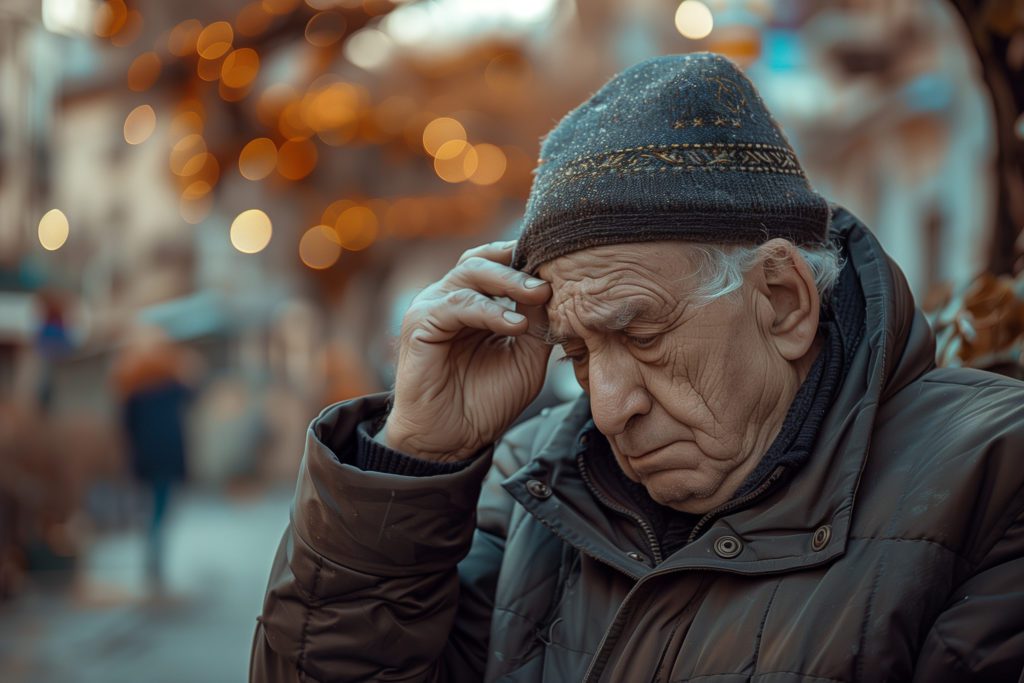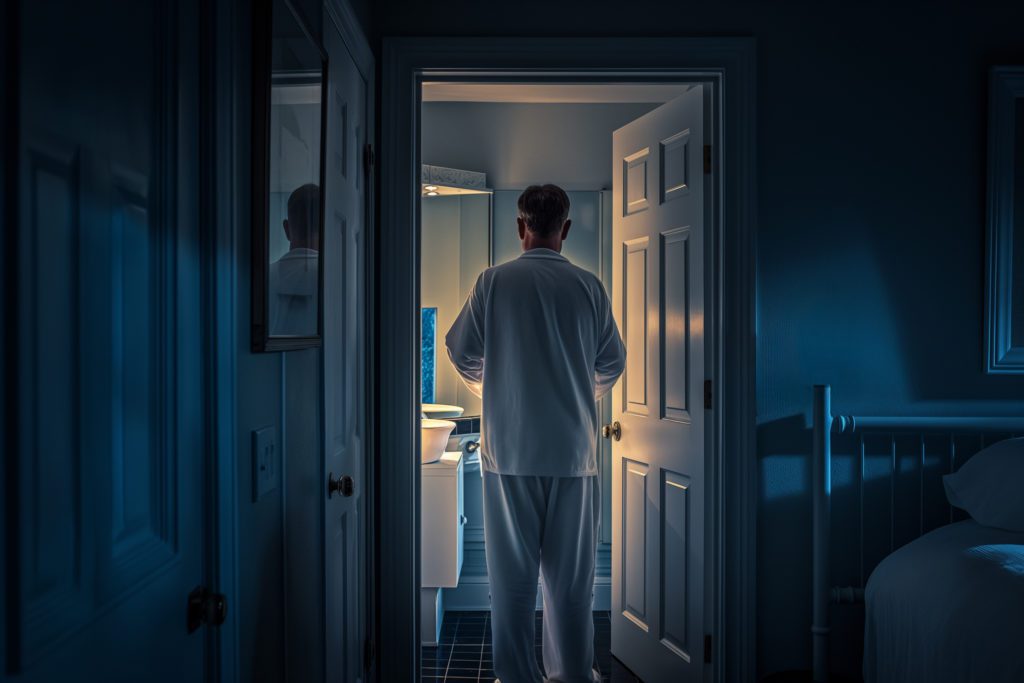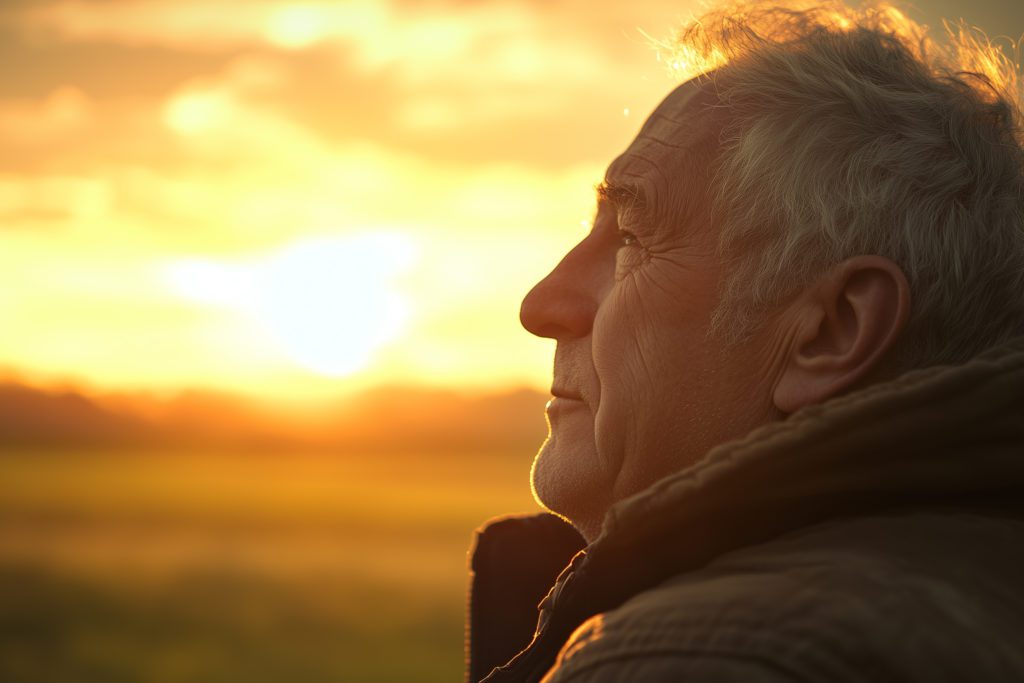
Light Exposure and Aging: How Changes in Light Sensitivity Affect Sleep in Older Adults
Learn about the factors that affect sleep in older adults to cause sleep disturbances. Light exposure, changes to eye lenses, and melatonin suppression can affect sleep quality at different stages of life.

Is sleep in older adults affected by light exposure? The reality is that the circadian rhythm affects the sleep habits of humans of all ages. That's why proper sleep hygiene is critical for wellness. However, research suggests that older adults may be more susceptible to risks associated with light-related disruptions to the circadian rhythm stemming from everything from eye changes to hormonal shifts. In this article, we'll cover how light exposure can impact sleep quality and wellness in older adults.
Understanding the Circadian Rhythm
The circadian rhythm has a profound effect on mental and physical health. The human body has adapted to correspond with a 24-hour cycle that is split between daylight hours and darkness hours. As a result, exposure to light and dark actually triggers molecular responses in nearly every cell of the body.
Circadian rhythms influence important functions in the human body that include our sleep patterns, hormone release, appetite, digestion, and temperature. In fact, nearly half of genes in the genome oscillate with a circadian rhythm. With this in mind, it should come as no surprise that certain biological processes are optimized by taking place at what the 24-hour cycle determines to be biologically appropriate times. People who follow a sleep-wake pattern that corresponds with the circadian rhythm enjoy improved mood, mental health, and overall physical health.
Does the Circadian Rhythm Change During a Lifetime?
While each day of our lives may have 24 hours, our bodies don't always interpret circadian rhythms the same at different points in our lives. Just think of an infant's relationship to sleep! Generally, newborns have irregular sleep patterns until about three to five months after birth. As the infant's endogenous circadian system begins to develop, the infant begins to develop a more stable sleep-awake pattern that is aided by daily light exposure.
During adolescence, it's known that the circadian rhythm shifts later in time. This shift makes falling asleep before 11 p.m. more difficult for teens. Interestingly, researchers believe that this shift that is also observed in other mammals is at least partially driven by sex hormones. A frustrating aspect of this trend is that teens need about an hour of extra sleep compared to when they were younger. Late-night screen time and early mornings for school contribute to why teens are the most sleep-deprived segment of society. Some researchers actually believe that sleep deprivation and circadian disruptions that occur in adolescence contribute to the emergence of psychiatric illnesses during the teenage and early adulthood years.
The circadian rhythm begins to normalize with age. After age 20, a person will begin to naturally shift back to an earlier circadian rhythm that makes them favor early mornings over late nights. Evidence suggests that the majority of adults have an endogenous circadian period that favors earlier mornings in order to stay in sync with the light-dark cycle.
Finally, it's time to explore the relationship that older adults have with the circadian rhythm. As humans age, the circadian rhythm continues the pattern of drifting into an earlier time that began in early adulthood. Some elderly people are actually at risk for circadian patterns that drift too far into the early side of things. For these people, the sleep-wake cycle is characterized by falling asleep too early and waking too early. The name for this disturbance is called advanced sleep-wake phase disorder (ASWPD). While this sleep-wake disorder allows for acceptable sleep quality and duration, the person affected may be unhappy because their sleep and wake times are simply earlier than they would like. Their sleep patterns may also interfere with socially acceptable habits that would allow them to work or socialize normally.
The Role of Eye Health in Light Exposure for Older Adults
As humans age, it's common for the lenses of the eyes to begin to yellow. Far from simply being a minor inconvenience, this change can actually reduce a person's exposure to potent blue wavelengths of light. For some people, this can lead to the development of a condition called irregular sleep-wake rhythm disorder (ISWRD) that is characterized by the absence of a clear circadian pattern of the sleep–wake cycle. People with ISWRD often exhibit sporadic patterns of sleep episodes within a 24-hour period. This can look like chronic napping during the day that is followed by periods of wakefulness during the night.
Melatonin Suppression
Melatonin is a hormone that's essential for regulating the body's circadian rhythm. Melatonin secretions begin in the evening before peaking around midnight. However, it's known that light exposure can suppress the body's natural pattern of melatonin release. It's also known that melatonin secretion decreases with age. This could make older adults more vulnerable to circadian disruptions caused by exposure to screens and artificial light.
When researchers looked at age-related differences in melatonin suppression, they found that older adults who were exposed to blue light had significant melatonin suppressions compared to young adults who were also exposed to blue light. This may be owed to changes in pupil diameter and lens transmittance reduction that are linked with age-related lens opacity.
Why Poor Sleep in Older Adults Really Matters
When exploring how changes in light sensitivity affect sleep in older adults, there's much more than just a poor night of sleep at stake. Research shows that circadian disturbances actually increase frailty risks in older adults. Frailty in older adults is characterized by diminished resilience to stressor events that is linked with adverse health outcomes and poorer aging. Decreased rhythm strength, reduced stability, and increased variation are all associated with higher risks for both frailty and faster progression of frailty over time. In fact, a disrupted circadian rest-activity rhythm can be considered an early sign of frailty in older adults.
Golden Years Start With Proper Light Exposure
Sleep in older adults is dramatically affected by the natural 24-hour cycle of the circadian rhythm. Age-related changes in light sensitivity are linked with melatonin suppression that can impact a person's sleep-wake cycle. Additionally, changes to the eyes over time can impact how light is filtered. In addition to making some older adults more susceptible to sleep disturbances, changes in circadian rhythm can actually leave elderly adults at higher risk for frailty.
Fortunately, the answer for good health for older adults is the same as it is for people at any age. Good sleep hygiene is linked with better physical, mental, emotional, and cognitive health. Older adults require between seven and nine hours of sleep each night. While this is the same amount of sleep needed by all adults, many older adults tend to fall asleep earlier than they did when they were younger. For older adults looking to support circadian health, Pillow can provide personalized tools and insights that work with earlier bedtimes to wake you up at the optimal time.

Written by
Emily Mendez
Emily Mendez is a former therapist and mental health author. She is one of the leading voices in mental health. Emily's writing has appeared in eCounseling, SonderMind, and more. Emily is frequently interviewed by Healthline, Fatherly, INSIDER, Family Circle, and other national media for her advice and expert opinion on the latest mental health topics.
Download Pillow
Get help
Press & News
Legal
Connect
X (Twitter)
Company
Copyright © Neybox Digital Ltd.



